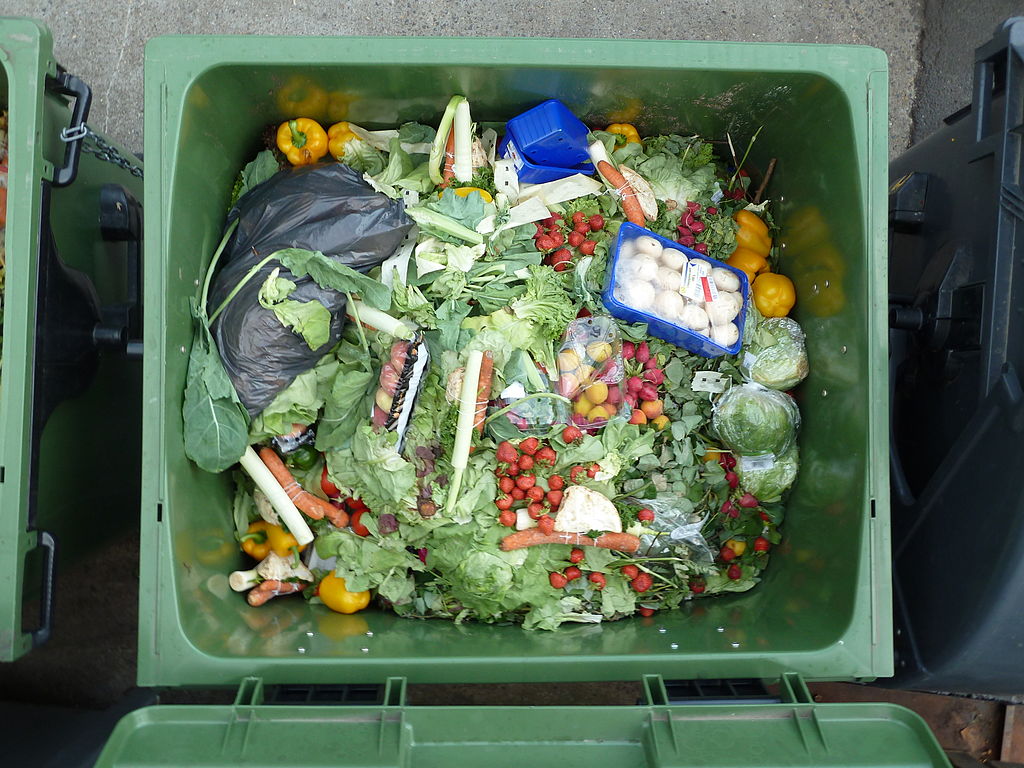
News
What are the best ways to reduce food processing waste in manufacturing?
March 15, 2023
By
Canadian Manufacturing


PHOTO: Wasted vegetables and fruits of a hypermarket from one or two days (Credit: Foerster via Wikimedia Commons)
From farm to table, Canadians waste around $49 billion yearly in unnecessary food waste and manufacturers make up for $21 billion, perpetuating a culture of food scarcity. Globally, countries with the most notable food waste must implement nationwide action to curb greenhouse gases and adverse environmental impacts. How can companies — regardless of size — reduce food waste and maximize the use of these valuable raw materials?
Monitor Warehousing and Distribution
Inefficient production or packaging lines waste products through machine faults and human error. Warehousing and distribution squander countless pounds of food loss and waste (FLW) yearly because of the need for more oversight. In warehouses, food in inadequate packaging rots, releasing methane and causing nearby food to spoil faster. Overstock also spreads cross-contamination, potentially causing the next nationwide recall.
Distribution issues compound these unfortunate storage realities. A lack of standardization equates to little to no traceability of stock. Once food hits transportation, companies must have systems to follow the inventory to its destination to ensure FLW doesn’t happen. Better tracking could reveal process improvements in distribution, such as increased training for better handling of produce or improved climate control to increase shelf life.
Despite immense FLW, many warehousing and distribution issues return to food surpluses, exacerbated by labour shortages and manufacturing standards. Companies package, store and throw out too much food to compensate for expected waste, indicating a need for a sector-wide mindset shift. Better monitoring systems could prevent milk from heading to sewers and increase the acceptance of foods that aren’t aesthetically pleasing but still nutritious.
Strengthen Technology
One way to control surplus and further reduce food waste in food processing is to employ more technology. Internet of Things devices can use sensors to obtain valuable data points, allowing companies to leverage predictive analytics. These insights could illuminate market trends based on incoming and historical data, informing manufacturers exactly how much to make given market needs. It could also notify processors of changes, giving them enough time to prepare for distribution adjustments and to find ways to repurpose older stock.
Companies can also install tech on processing lines — like smart conveyors — to automate production. It increases efficiency while reducing human error resulting in FLW. For example, presets can automatically fill liquids to minimize overconsumption and halt production by informing software and robotics that they met quotas.
Find Avenues for Leftovers
Farmers have numerous forces against them to find ways to distribute extra food. Some crop insurance doesn’t permit farmers to donate to charities. Some governments encourage food destruction to keep tabs on market pricing — though this isn’t always an infallible solution to food excess. Every type of food processing could reduce food waste by advocating and finding sources for even the most minute leftovers.
Food washing and pruning remove peels, rinds and seeds that could enrich compost. The meat industry strips animals, ignoring the value behind bones that could contribute to stock. Instead, food processors toss these materials into the water waste, containing fats and other residuals from cleaning and processing. Additionally, foods rich in byproducts — like pectin or grape seed oil — could be reused by other industries instead of polluting waterways or burning in incinerators.
Food manufacturers can communicate with supply chains to see what communities or sectors could use leftovers.
Food for Nourishment, Not Landfill
Food manufacturers must reduce food waste to eliminate insecurity and reduce adverse environmental impacts. It will empower more households with nutritious food, reduce stress on the planet, and increase productivity and profits for food producers globally with a few industrial changes.
Print this page